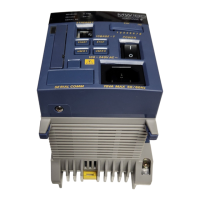1-13
IM MW100-01E
Explanation of Functions
1
Measurement
Measured data sampled at certain intervals is acquired by the various input modules.
Acquired data is saved to the CF card.
In addition, if an alarm occurs or if the main module receives output commands sent from
the PC, the main module generates signal output instructions to the output modules.
Data Sampling
The relationship between the measurement interval and recording interval is as follows:
The measured, computed, or thinned data that is recorded at the recording interval is
saved to the CF card.
For saving data to the CF card, see “Saving Data to the CF Card” in this section.
Time (s)
Measurement interval (MATH interval)
Measured and computed data
Recorded measured and computed data
Recorded measured and computed data
using thinning recording
Recording interval
Recording interval of thinning recording
Measurement Intervals
• Synchronization between modules
If set to the same measurement interval, measurements made by input modules in the
same acquisition unit are synchronized.
• Synchronization between channels
On the 4-CH, High-Speed Universal Input Module and 10-CH High-Speed Digital Input
Module, measurement is synchronized between channels.
On the 10-CH, Medium-Speed Universal Input Module, Six-Channel Medium-Speed
Four-Wire RTD Resistance Input Module, and 4-CH, High-Speed Digital Input Module,
since measurement occurs sequentially by channel, it is not synchronized between
channels (it can be said to be synchronized within measurement intervals).
Multi interval
Measurement Groups
Three measurement intervals can be set, and measurement channels can be assigned
to each interval. There is a particular order in which measurement intervals can be set
to measurement groups. For more information, see section 3.4, “Setting Acquisition
Conditions for Measured and Computed Data.”
For a description of setting the measurement interval, see section 3.4, “Setting Acquisition
Conditions for Measured/Computed Data.”
Filters
A first-order lag filter is available. You can select a time constant (time until 63.2% of
the output value is reached) corresponding to the measurement interval indicated in the
equation below.
Time constant = measurement interval × N (where N = 5, 10, 20, 25, 40, 50, or 100)
For details, see section 2.10, “Measures against Noise on the MW100 Data Acquisition
Unit.”
For details on filters, see section 2.9, “Measures Against Noise on the MW100 Data
Acquisition Unit.”
1.3 Functions of the Main Module

